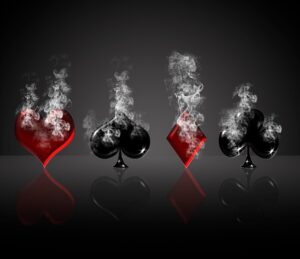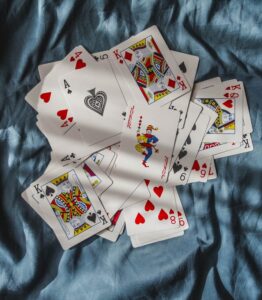Playing cards are a large part of our history as a species. They are always there, everyone’s got a deck, often a standard one. What more do you need, except another deck if you’re playing with more than two people?
Playing cards, like most things in history, had to begin somewhere. With how we tend to twist and turn things, it becomes harder to find the right information about almost anything, let alone something specific like playing cards.
Here is a brief overview of the history of playing cards, where they began and how they progressed.
14th Century Europe

Playing cards in Europe appeared around 1370, in either Italy or Spain. Like most things during that time, playing cards were toys of the rich. They were hand-painted and very expensive.
Playing cards changed hands and during the 15th century, most of Europe’s upper class had playing cards in their possession, and used them as a pastime activity.
Cards Getting Cheaper
It didn’t take long after the invention or discovery of playing cards for them to get cheaper. The German printing techniques brought prices down, because hand-painting was no longer necessary.
In the late 15th century, around 1480, a French technique of stenciling made card making cheaper, but also managed to simplify the process enough, so that we ended up with the symbols we still use to this day, trefle, pique, carreau and coeur, which translates to clubs, spades, diamonds and hearts.
Cards Getting More Popular

During the 16th and 17th century, cards were becoming a lot cheaper and were now accessible to the general public. Along with dice, cards were the favorite pastime in pubs and underground gambling dens, or simply gambling dens, because gambling wasn’t regulated at the time.
King Louis XIV used gambling as a way to fund the country, having a single casino which was controlled by the throne. Other countries at the time simply taxed card production.
The Standard Deck
During the creation of the cards at the end of the 15th century, England imported the French design and we got the 52 standard deck, even though there are other decks. A deck of cards typically has numbers 1 to 10, with the first card also being called an Ace. The cards are colored red or black, with diamonds and hearts being red while spades and clubs black.
Aside from the numerical cards, there are also the royal cards, the jack (which was once a knave), the queen and the king. There are also the joker cards, which have variable value depending on the game.
This is a brief history of playing cards, from the day they were reportedly created to today, when we have all sorts of decks in all sorts of styles.
